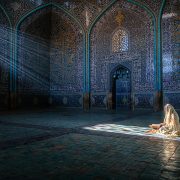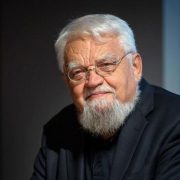
There is undoubtedly a personal element to this, so it is only fair to start here: I do not believe that international political issues between states can be reduced to a zero-sum game in which, as realists say, only national interests are eternal. All the rest is subject to the convenience of the moment.
For about three decades, I have been working very humbly in a different direction, trying to get people to understand each other’s reasons, interests, and points of view. Then, from this mutual understanding, it is crucial to try to find a point that would move bilateral or multilateral relations forward positively, not zero-sum.
The idea is that in the meeting of two people there is not only the more or less equal division of the spoils of scarce resources, but something new is created that can be more than one and the other. It is a child, children, grandchildren, a family that extends itself; it expands from generation to generation, including new people. It increases and multiplies the resources and the initial spirit of the union.
It is not just a starry-eyed, naïve idea; it is the substance on which modernity was founded—the selfish exchange that generates positive elements beyond the interests of one or the other at the moment.
It’s also not blind but realistic faith in this form of exchange and the recent history of humanity. After World War I and World War II, the victorious nations decided not to simply impose their will on the vanquished but to create spaces of mediation and mutual understanding that would limit or avoid new wars and zero-sum clashes leading to war. They made the League of Nations and, on its ruins, established the United Nations.
It is also historically the role of the Church in the West and in the Mediterranean to act as a mediator of mutual understanding to better resolve contrasts or simply move frictions forward more positively.
This is true in the external relationship between nations and internally between individuals, societies, and business entities. One cannot think only of mors tua vita mea. One must also believe that two people, two entities, or three entities can create and must hopefully create something new. The actual mediation also begins with being incredibly realistic about the situation, finding the truth about each other, and using that truth to build, not to destroy.
If one departs from this logic, every bilateral meeting is at core only a deception, the search for a way to cheat the other party.
In this way, every temporary peace is only the seed of a bigger war in the future. It increases the chain of tensions and clashes in the world, bringing temporary and minimal benefits to this or that state. One must, therefore, go beyond the logic of «win-win»: Let’s divide the spoils more or less fairly or unfairly, depending on our ability to deceive the other.
There must be a space of shared growth, of dynamic and positive balance in which everyone finds a more significant advantage, and there is not only division of the existing but also the creation of something more in the future for all parties. if one does not embrace this logic
inside and outside a country, one simply accepts a logic of total and universal confrontation, leading to the extermination of all but one. Then that one will be slaughtered sooner or later anyway because, within the state, someone else will sooner or later overthrow him or his successors.
Chinese border history
Indeed, the history of China and that of the first imperial unification says that the multitude of states can be gradually reduced, and the various states can be destroyed and incorporated. This, however, occurred through a very long process in a geographical space that gradually became limited and defined by deciding to limit the scope of the «unification».
As Nicola Di Cosmo argued,[1] the space of the empire was defined by the expansion outside of the states, initially around the central nucleus of the Yellow River valley. This expansion annihilated some settled people bordering the early civilized community but excluded the nomadic or semi-nomadic people around the «second line» of settled civilizations.
«The reduction of the number of the contending states in China to a few strong ones, and the northward expansion of [the preunification states of] Qin, Zhao, and Yan, resulted in the assimilation of several peoples, such as the Rong and the Di, within the orbit of the Zhongyuan [the central plains, the core cultural community of ancient China]. This eliminated the protective screen that those people had supplied between China and the unambiguously nomadic, warlike groups further north, who suddenly appear in the Chinese sources beginning at this time…[2]
The people who inhabited these border regions were mostly settled; they lived in fortified cities, and continued to export pastoral products, animal husbandry having long become their main economic pursuit. It was probably due to pressure from the northern nomads that in the mid-fourth century B.C. the state of Zhongshan started the construction of frontier fortifications that was the prelude to building the Great Wall. Thus, we can take this approximate date as the beginning of our fourth phase in the history of the northern frontier. The evidence available today, from both written sources and archaeological investigation, suggests that it was the shrinkage of the intermediate area inhabited by semi-pastoral people, gradually converted to or absorbed within the Chinese sphere, that eventually brought the northern states into direct contact with the nomads. Contacts may have occurred long before, but firm evidence of a strong impact of northern nomads upon historical developments in the south must be dated to the end of the fourth century B.C. This is epitomized by the appearance of a new type of foreigner, the Hu[3]…
The militarization of the frontier was due to the robust territorial expansion of the three northern Chinese states, all determined to protect their newly acquired lands».[4]
We then had a limitation of what was «ancient China» and what was not; what was to be unified, and what was not. At the same time, there was a unification of the foreigners, outsiders to the ancient Chinese community/koine:
«[The] Hu [in the North] and Yue (a people of the south) were divided into many groups that did not understand each other’s languages; yet when threatened by a common enemy, they would all unite and fight together.’ This statement seems to imply that by the end of the fourth century, the terms Hu (for the north) and Yue (for the south) were used as broad ‘anthropological’ categories applied to various political entities— clans, tribes, or even states—that claimed different origins and spoke different languages; in case of need, however, these barriers could be overcome, and a political unity found».[5]
In other words, with the recognition and the shaping up of a cultural unit in the expanded central plains, we had the establishment of two other cultural units, the Hu in the north and the Yue in the south. Both were unified only if looking at them from the Central Plains, and both were deemed external to the Central Plains and not part of the tremendous political war games of the time.
This was the cultural/geographical/political premise to what happened in the later third century B.C.—the first political unification of the Central Plains.
Modern koine
Now, it is a different environment. No «limited cultural community» is shaped by a few contending states shaping the world in one internal competition, like the central plains, and one external, like the Hu and the Yue, out of the competition. The world is one whole cultural/political game where a dominant power, the United States, shapes the common culture and politics. The U.S. is more than a country. It is a worldview. To replace it, one country could inherit the worldview and order, roughly as the U.S. did with Great Britain more than a century ago, or try to push back the U.S. worldview, but then basically, the challenger would have the whole world against it, not just the United States.
Significantly, the U.S. became the top global economic power as early as the 1860s–70s. Yet, it possibly shed the British political leadership a century later, and just accidentally, once everyone discovered the British intelligence service had been infiltrated and compromised by Soviet agents. Even now, however, Britain produces the most authoritative news coverage, The Economist and The Financial Times, and has some of the most influential universities, Oxford and Cambridge.
Therefore, the U.K. can still produce some of the most potent intelligence, which is understanding the world and projecting the future, and certainly not a collection of almost insignificant piecemeal «secrets». Significant intelligence «determines» political decisions, not vice versa, as in authoritarian countries. The lack of accurate intelligence (not secrets) led to substantial political mistakes that doomed more than one authoritarian country.
China was external to the dominant global cultural koine until about a century ago; it gradually joined it but still has little significant role as it chose to keep aloof and away from it. It doesn’t have any globally influential university or mass medium simply because the apparatus fully controls it and it doesn’t have any authoritative independence. If someone from China wants to hear what Beijing has to say on anything, they will just listen to its top leader. This enhances the leader’s role but cuts down the country’s long-term sway and impact.
In these conditions, for China to challenge the present order would be more complex than the newborn U.S. challenge to England during the Napoleonic wars. Then, the U.S. tried it, thinking England was too embroiled with France to mount a counterattack. The Americans were proved wrong. The U.S. was bitterly defeated in 1812. New York was set on fire, and Canada was reconquered by England, all before Napoleon’s rout in Russia and loss at the battle of Leipzig in 1813.
Despite the bitter divisions in America,[6] the U.S. is not under siege by a new Napoleon, and China’s perceived challenge is the one element unifying the country. Some American politicians might want to use the China card to bring the U.S. together again.
Domestic reforms
Moreover, besides the external environment, there are domestic issues. The U.S. managed to gain its present power thanks to a mix of internal structures and foreign projections. It didn’t happen suddenly, but they were the legacy of centuries of European outreach and constant restructuring of internal politics and economics.
A parallel process occurred in ancient China, leading to the first unification. As Mark E. Lewis discussed:[7]
«The old league of cities ruled by the Zhou nobility was replaced by a system of territorial states built around unchallenged monarchs who commanded many dependent officials. These, in turn, were employed to register and mobilize the individual peasant households, primarily for the sake of imposing universal military service. The mass peasant armies of the period entailed the emergence of military specialists who were masters of the theories and techniques of warfare. At the same time, the needs of diplomatic maneuver produced theorists of stratagem and persuasion who formulated new models of interstate relations. The Zhou world was also reinvented as a geographic entity, both through expansion to the south and the southwest and through new patterns of physical mobility that marked differences of status…[8]
Warring States world was still primarily defined by the drainage basin of the Yellow River. Second, the old states in what had been the geographic center (most notably the Zhou capital region, Zheng, Wey, Song, and Lu, that is, modern northern Henan province and southern Shandong province) had no avenues for expansion and were reduced to buffer zones between the larger states that surrounded them…[9]
Regular meetings of rulers and visits by embassies were beginning to establish a routine of diplomatic exchange between these seven leading states that divided the Zhou world between them. At what is almost exactly the midpoint of Warring States history, a system based on territorial polities in a perpetual state of regulated conflict had taken on its classic form… The polities of this period were “states organized for warfare”. Population registration, universal military service, and ranks of military merit were adapted to enable each state to expand at the expense of its neighbors. These new governmental institutions were paralleled by the transformation of warfare».[10]
These states were geared for effective and massive wars of conquest and control. Their survival depended on expansion and rule over increasing agricultural resources. It was a model unlike that adopted by the Phoenicians, Greeks, or Romans in the Mediterranean based, crudely put, on plunder and trade.[11]
«Qin’s total military capacity lists 1,000,000 armored infantry, 1,000 chariots, and 10,000 horses. These round figures are notional and serve only as rhetorical terms to suggest great size. For Wei one account says 360,000 infantry, while another says 200,000 crack troops, 200,000 spearmen, 100,000 menials, 600 chariots, and 5,000 cavalry. Zhao supposedly had several hundred thousand armored men, 1,000 chariots, and 10,000 cavalry. Hann had only 300,000, including menials and garrison troops. Qi had several hundred thousand or 1,000,000. Chu had 1,000,000 infantry, 1,000 chariots, and 10,000 cavalry. These figures are exactly the same as those for Qin and thus again appear to be notional figures suggesting a great power. Yan, a weaker state, is credited with only 100,000».[12]
All in all, the grand states, at the peak of their power, could field four to five million troops. They were vastly more numerous than the imperial Roman army, consisting of some 30 legions of between 150,000 and 200,000 men.
Moreover, as Mary Beard put it «The [Roman] empire gradually destroyed the distinctive structures of government that had brought it into existence in the first place, paving the way for one-man rule. The empire created the emperors, not the other way around».[13]
In China, it was the other way around. First, there was a series of domestic bureaucratic reforms that concentrated power in the hands of one man to provide greater efficiency to muster resources for the war effort; then, there was unification.
The Qin emperor closed the borders of China to what basically it is now its present core territory. The newer extension depended on the incorporation in the Republic of China of the territory conquered by the Manchu empire. Strictly speaking, this was not much of an incorporation because it extended Chinese sovereignty over previously «vassal» areas. The extension was largely due to the encroachment of European powers on China, canceling the gray area of Chinese suzerainty (different from sovereignty) over some border territories. To that encroachment China responded by clearly defining its previously unclear borders. In a way the contact with European powers forced modern China for the first time in its history to delineate clearly what was or was not China, forfeiting centuries of tradition with neighboring client territories.
The first proper break of the Qin legacy was the BRI (Belt and Road Initiative) – the first global projection of China out of its core territory and out of its traditional space of “clients.” The initiative more than anything else breaks the mold of Chinese history and opens a new page, which is still to be fully explored both by China and the rest of the world.
Roman different legacies
It is very different from the Roman legacy. Here the idea of the empire didn’t stick to one territory but migrated to different countries. There has been a second Rome, Constantinople or Istanbul, a third Rome, Moscow, and fourth Rome, Washington, with plenty of other long or short-lived attempts with the Holy Roman German Empire (born in the 9th century A.D. and finished only with World War I and the collapse of the Austrian empire), France, England, Spain, et cetera.
In sum, while the Chinese empire changed dynasties every couple of centuries but insisted on the same territory, the Roman crown changed territory with its «dynasties», each of them lasted anyway much longer than Chinese dynasties.
This all compounds with many structural differences between Rome and China. Even if the figure of the Roman army is doubled with the number of auxiliaries, we are at less than half the size of the single Qin army. These forces were immense, possibly not very efficient, extremely well trained, and perhaps also mostly expendable. But their numbers and equipment created an overwhelming superiority on the field to crush the enemy. It also imposed changes in the logistics and, thus, in the organization of the state backing those armies. It all led to:
«Increases in the scale of combat, in terms of time and space. Whereas a campaign in the Spring and Autumn period lasted at most a season, and a battle no more than two days, Warring States campaigns often lasted for more than a year».[14]
Moreover, it was not just an offensive effort. It modified the defense mechanisms:
«Each state built barriers and fortifications at its strategic points and kept permanent garrisons stationed there. In hilly terrain, the regions around such forts would also have towers to keep watch and send signals. These barriers also allowed states to check those who entered and exited their borders and to collect transit taxes from merchants who carried goods from state to state. More substantial than these systems of barriers, forts, and watch towers at strategic passes were the walls erected along state frontiers and the boundaries between the northern nomads and the states of Qin, Zhao, and Yan».[15]
Intelligent officers
It established clear borders between the states that shaped a «Westphalian order» in ancient China. The system was all based on people that, in modern terms, we could call «senior intelligence officers» working together with military commanders and the state’s top ruler.
«The commander also figured, along with the ‘persuader,’ as one of the archetypal figures of the realm of stratagem and cunning. The military treatises describe the ideal commander as a potent figure who could penetrate the flux of appearance, perceive underlying order, recognize decisive moments of change, and strike. He was able to disguise his intentions while penetrating the schemes of his adversary and to manipulate appearances so that the enemy would march to its doom. A master of maneuver, illusion, and deception, he waged war in the realm of the mind and directly translated his stratagems into victory in the field. These arts of stratagem and manipulation, and the master of cunning wisdom who embodied them, figured prominently in Warring States literature and in later Chinese culture, and they derive from the military treatises and the handbooks of persuader/diplomats».[16]
In modern terms, are Mao or Xi Jinping following in Fan Sui’s ancient footsteps? Perhaps Mao did, Xi, as he launched the BRI may be doing something different.
Lewis points out the unique role of Fan Sui in the rise of Qin, the real inventor of China’s first political unification:
«He was the first politician to articulate a goal of irrevocable expansion for Qin. Abandoning the old policy of making and unmaking alliances to suit the needs of the moment and seizing territories scattered across the Warring States (e.g., Dingtao), he asserted ‘alliance with the distant and war with neighbors’ as a basic principle allowing for the irreversible expansion of the state as an integrated territorial unit. To reinforce this policy of a unitary state, he insisted that ‘each inch or foot gained was the king’s inch or foot.’… Fan Sui articulated recent political developments and defined the new ambitions of Qin was “attack not only their territory but also their people.’ This meant to aim not only at territorial expansion, the destruction of armies on such a scale that rival states would lose the capacity to fight. Here we find enunciated as policy the mass slaughters of the third century. [emphasis added] … Zhao’s losses supposedly totaled more than 400,000, and though this figure is certainly exaggerated, Zhao never entirely recovered from the defeat”. Like Wei and Qi, it was no longer able to match Qin in the field… The catastrophe of Changping, followed shortly by the deaths of Bo Qi and Fan Sui, marked the end of another period of Warring States history. Qin now dominated the world of the Warring States. No single state could match it, and there was no mechanism to hold together a multistate alliance against it for any period of time. Although the Warring States period would last three more decades, the issue was no longer in doubt. All that remained was a chronicle of steady Qin expansion and the sequential destruction between 230 and 221 B.C. of the remaining states».[17]
These totalitarian states rivaled each other on the level of autocracy they could deploy. If one looks at this process, there are two fundamental problems. One is, can a state today get to the level of destroying one or more rivals such that a total and totalitarian order can be established, like the one brought about by the first emperor of China in the second century B.C.?
The second problem is about the “spirit of the times.” On several occasions in the past century, the United States would have had the opportunity to establish a monolithic order by nullifying or destroying other states that were certain to come along. The United States did not do so, and this is probably due to the American belief in another kind of order. That order is not simply the total and totalitarian order but an order that domestically and internationally believes in a system that we call liberal, and it is what has produced and grown the modern world and created a growth of wealth and prosperity unprecedented in human history.
In general terms, the results achieved in the past few centuries, since the beginning of the industrial and liberal revolution, have produced outcomes that cannot be reversed if not at the cost of a global social, political, and economic meltdown. The all-around growth of well-being, freedom, distribution of opportunity, and such mean that anyone who wanted to resist would find tremendous opposition within his own country and outside.
This wealth accumulation has been significant in the states that led this direction of travel, so they have no long-term interest in changing it. Other states that seem to be challenging this order today, i.e. China, have no genuine long-term interest in changing the current order of things. There are pulls for forms of economic restrictions and hesitations in fully joining the present global order out of fear of jeopardizing the economic and social base on which its current political power stands.
In other words, we have friction between long-term and short-term interests that can produce significant clashes and eventually topple the present order. But if those short-term interests were to win, the current system would go belly up. Perhaps paradoxically, societies where the working class traditionally was paid on a weekly basis (like England, where workers would spend it all in one day and would starve the rest of the time) are willing to see the longer term, compared to societies where peasants were paid once a year (like China, where peasants could skimp for 12 months), which are more «short-termists».
In other words, the contrast is not between different state interests as much as between long- and short-term visions in looking at the interests of the states and of the countries.
Surely, without a feasible short-term strategy, long-term we are all dead. But the opposite is also true. Without a feasible long-term strategy, short-termism kills as well. The balance between the two is the only survival mechanism.
[1] See «The Northern Frontier in Pre-Imperial China», p. 913 onward in The Cambridge History of Ancient China, 1999.
[2] Ibidem p. 920
[3] Ibidem p. 979
[4] Ibidem p. 989
[5] Ibidem p. 991
[6] See http://www.settimananews.it/informazione-internazionale/us-common-ground-lost/
[7] See Mark Edward Lewis, «Warring States Political History», in The Cambridge History of Ancient China, 1999.
[8] Ibidem p. 615
[9] Ibidem p. 621
[10] Ibidem pp. 647-648
[11] See Thinking from the Tip of the Spear http://www.settimananews.it/informazione-internazionale/thinking-from-the-tip-of-the-spear/ and A New Great Mediterranean Game http://www.settimananews.it/informazione-internazionale/new-great-mediterranean-game/
[12] See M.E. Lewis op. cit. 654
[13] Mary Beard Emperor of Rome, 2023. P. 66
[14] Ibidem p. 656
[15] Ibidem p. 657
[16] Ibidem p. 660
[17] Ibidem pp. 667, 668, 669





